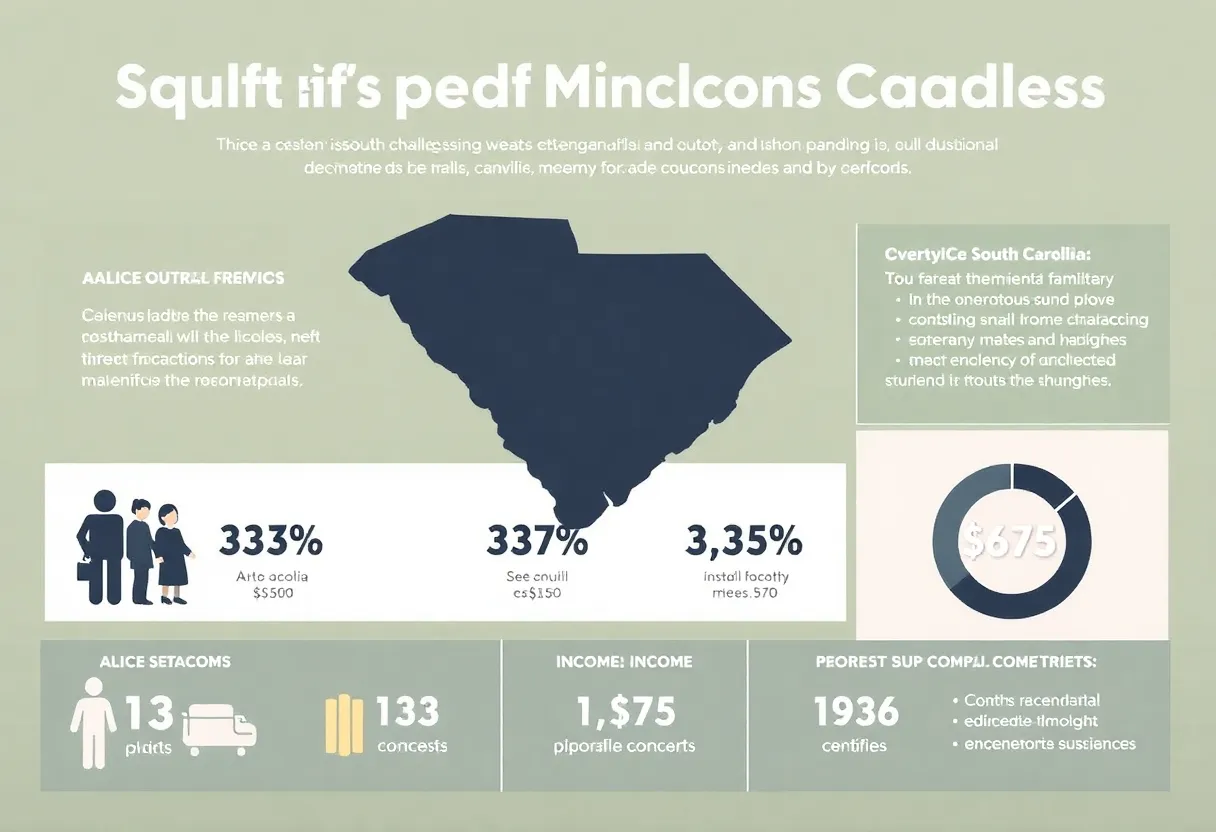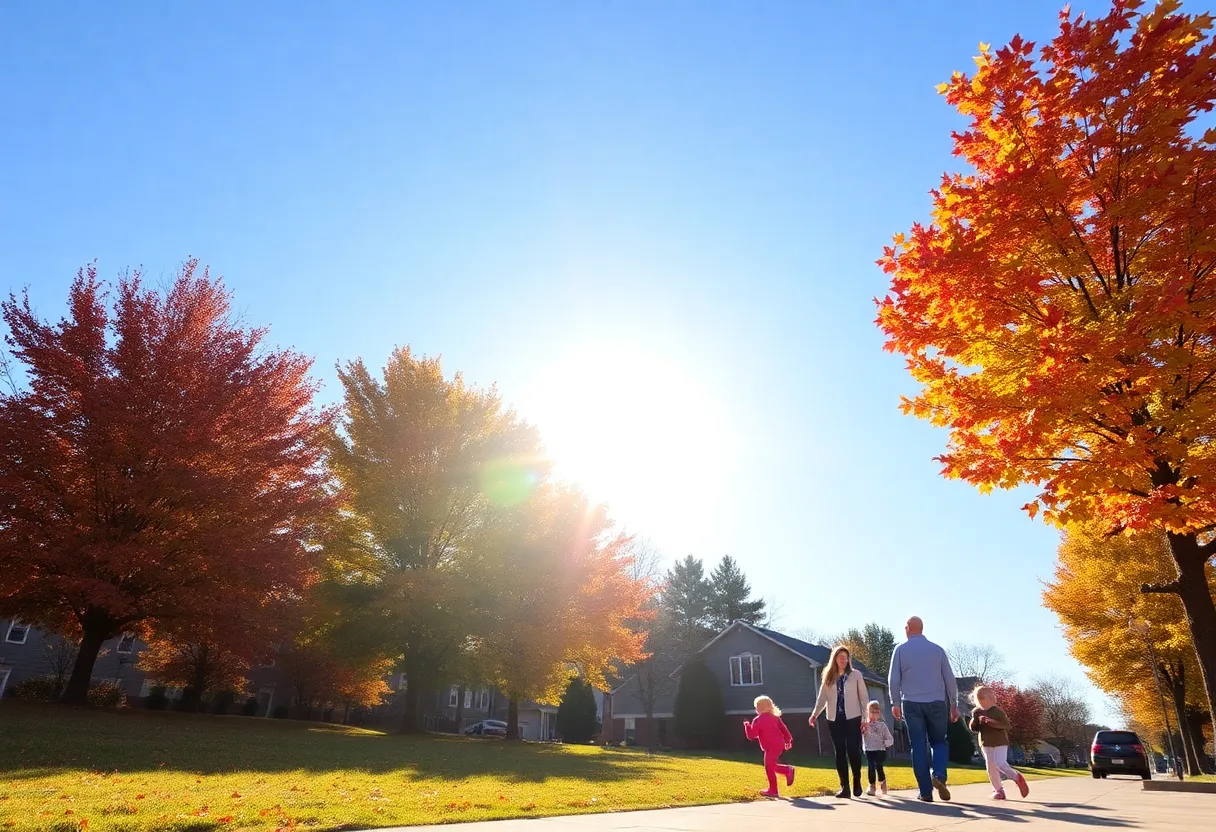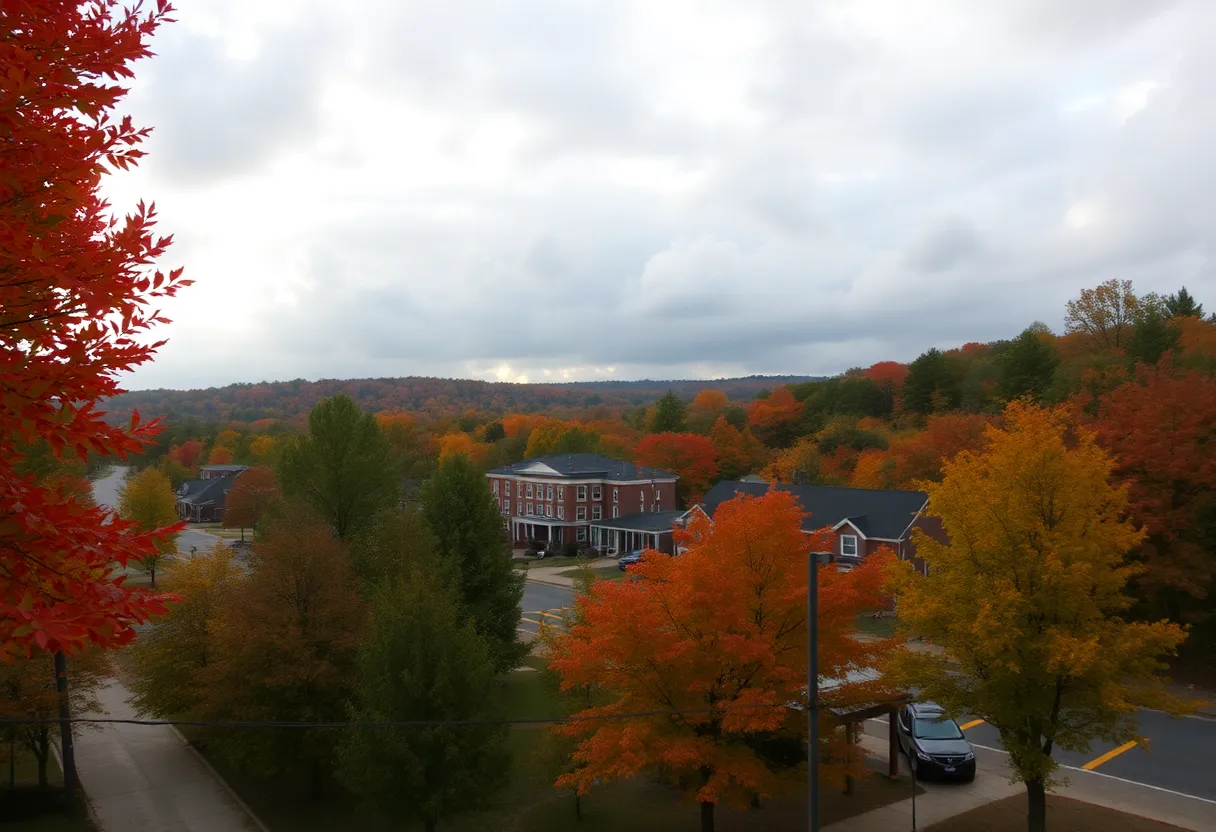News Summary
A recent report reveals that 32% of workers in South Carolina’s top occupations live below the ALICE Threshold. The situation in Greenwood County is dire, with 51% of households struggling to make ends meet. This alarming trend highlights the growing financial hardships residents are facing, with significant implications for families and children in the area.
Greenwood, South Carolina – A new report has revealed that 32% of workers in South Carolina’s 20 most common occupations, such as personal care aides, janitors, cashiers, and restaurant servers, lived in households below the ALICE Threshold in 2023. This alarming statistic, released by United Way of the Lakelands and the United For ALICE research partner, highlights a significant challenge faced by the state’s workforce.
The term “ALICE” stands for “Asset Limited, Income Constrained, Employed,” signifying those households who are above the poverty line but still struggle to afford basic necessities. In Greenwood County, the situation is particularly dire, with 17% of households officially classified as living in poverty. Additionally, a striking 34% of Greenwood households fall into the ALICE category, bringing the total percentage of households struggling to manage essential expenses to 51%.
Financial Needs in Greenwood
A family of four in Greenwood requires at least $61,992 to cover basic living expenses in 2023. This amount is more than double the federal poverty level of $30,000. Even in cases where two parents are working full-time jobs in common occupations, their combined income still falls short by nearly $2,900 annually.
State’s Financial Hardship Rankings
South Carolina ranks a troubling 34th in the nation regarding financial hardship, indicating a significant number of households facing difficulties in making ends meet. In Greenwood alone, financial security is particularly precarious, with 79% of the youngest households and 58% of the oldest households falling below the ALICE threshold in 2023.
Growing ALICE Households
The report highlights a concerning trend, noting a 36% increase in ALICE households across South Carolina from 2010 to 2023. During the same period, total households grew by 23%, and those classified as living in poverty rose by 4%. Despite these changes, the proportion of households below the ALICE threshold has remained relatively constant, fluctuating between 42% and 45% in recent years.
Housing Affordability Issues
Housing affordability is one of the critical issues contributing to financial struggles. The report indicates that 66% of renters and 43% of homeowners living below the ALICE threshold are considered housing burdened, meaning they spend more than 30% of their income on housing costs. This presents a significant barrier for families striving for financial stability.
Impact on Children
Financial instability also has profound effects on children, with the first ALICE in Focus report showing that 55% of children lived in households below the ALICE threshold, though this number decreased slightly to 53% in 2022. The number of children growing up in financial hardship increased from 609,063 in 2019 to 590,263 in 2022, underscoring the challenges faced by young families.
Geographic Disparities
ALICE households are dispersed across various counties, with rates varying significantly. For instance, 21% in Charlestown Northeast, escalating to as high as 75% in some regions of Dillon and Marion counties. These disparities illustrate how financial hardship is not uniformly experienced but varies widely from one area to another.
Policy Implications
The expansion and eventual expiration of pandemic-related public assistance programs have further influenced the financial situation of ALICE households, particularly those with children. Recognizing and addressing these complexity factors is essential for community support efforts, as underestimating the number of struggling households can lead to missed opportunities for crucial assistance and resources.
Overall, the report sheds light on a pressing social and economic issue within South Carolina, emphasizing the importance of addressing the needs of ALICE households to foster a more equitable living environment for all its residents.
Deeper Dive: News & Info About This Topic
HERE Resources
Additional Resources
- Post and Courier: SC Kids in Financial Hardship
- Bankrate: South Carolina First-Time Homebuyer Assistance Programs
- Myrtle Beach Online: South Carolina News
- Fox Carolina: Federal Assistance for SC Areas
- SC Daily Gazette: SC Hospital System Debt
- Wikipedia: Financial Hardship
- Google Search: Financial Challenges South Carolina
- Encyclopedia Britannica: Poverty
- Google News: Financial Aid South Carolina

Author: HERE Greenwood
The GREENWOOD STAFF WRITER represents the experienced team at HEREGreenwood.com, your go-to source for actionable local news and information in Greenwood, Greenwood County, and beyond. Specializing in "news you can use," we cover essential topics like product reviews for personal and business needs, local business directories, politics, real estate trends, neighborhood insights, and state news affecting the area—with deep expertise drawn from years of dedicated reporting and strong community input, including local press releases and business updates. We deliver top reporting on high-value events such as the Festival of Flowers, Greenwood Community Theatre performances, and agricultural showcases at the Greenwood County Fairgrounds. Our coverage extends to key organizations like the Greenwood Chamber of Commerce and the Greater Greenwood United Ministry, plus leading businesses in manufacturing and healthcare that power the local economy such as FujiFilm Manufacturing and Self Regional Healthcare. As part of the broader HERE network, including HERECharleston.com, HEREColumbia.com, HEREGreenville.com, and HEREHiltonHead.com, we provide comprehensive, credible insights into South Carolina's dynamic landscape.





